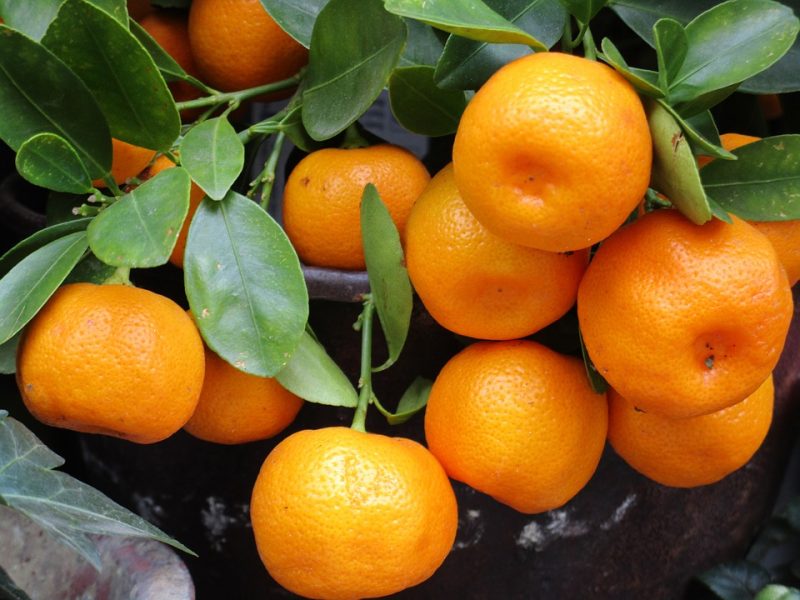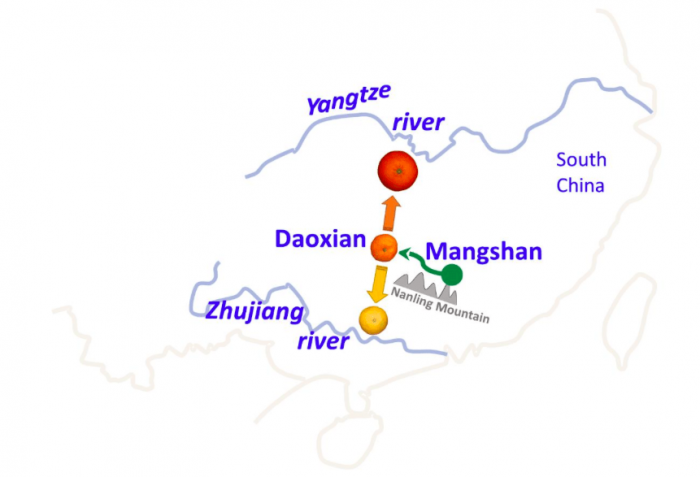
The domestication of perennials is less well-known than the domestication of annual crops. Citrus is one of the most important fruit crops worldwide, growing in more than 114 countries. Citrus domestication is believed to have begun much more recently than the domestication of food crops, ca. 4000 years ago. Genetic evidence for mandarin domestication is lacking so far.
Mandarin is a basal and founder species in the citrus family. Many other commercial varieties such as the sweet orange, grapefruit, and lemon have genetic contributions from mandarin. Due to a long cultivation history in China, the mandarin has made a great contribution to the citrus industry because of its ease of peeling, nutritional importance, and appetizing flavor. It has many known varieties, such as the Satsumas mandarin, Clementine mandarin, and Ponkan mandarin.

Source: Qiang Xu. License: all rights reserved.
China is known for its many mandarin landraces and wild germplasm. A large endeavor has been made to collect the wild and unique mandarin resources. Yet the domestication history of mandarin has been controversial for a long time. The earliest mention of mandarin was in a list of tribute fruits to the Emperor of Dayu ca. 2205 to 2197 BC in a Chinese imperial encyclopedia entitled Yu Kung. Mandarin has been commercially produced in an area of South China called the Chu state or the Jinzhou region according to a description in ancient books. The Mangshan wild mandarin, found around the Nanling Mountains, has many primitive characteristics such as the high acidy in fruits, small fruit size, long existence in old-growth forests, and pure genetic background.
In order to investigate the evolutionary relationship with other mandarins, we have assembled a genome of the Mangshan wild mandarin and found a comparable genome size (334.2Mb) with other citrus species. This draft genome could be a representative mandarin genome in the citrus family. We found that reduction of citric acid is a remarkable trait in mandarin domestication, while sugar level was not changed much between wild and cultivated mandarins. This is different from the traditional view that the sugar increase may be the most significant event of the domestication of fruit crops while reduction of acidity is a kind of hitchhiking effect. In addition, we found genetic evidence for the domestication trait of fruit acidity. The wild mandarin has genetic introgression from a wild citrus, Ichang papade, and the cultivated mandarin has wide introgression from pummelo.
Two independent domestication events have occurred in South China, resulting in two geographically distinct groups of cultivated mandarins (MD1 and MD2) in the North and South of the Nanling Mountains, respectively. Two bottlenecks and two expansions of effective population size were identified for the MD1 group of cultivated mandarins. However, in the MD2 group, there was a long and continuous decrease in the population size. The fruit in the MD1 group is redder, larger in size, and has medium acidity, while the fruit in the MD2 group appears yellow, smaller in size, and has lower acidity.
Our study reveals that mandarin domestication and the wild germplasm constitute an important resource for fruit flavor and disease resistance in future studies. Ongoing projects include a test of the wild mandarins’ response to Huanglongbing (greening) disease.
These findings are described in the article entitled Genome of wild mandarin and domestication history of mandarin, recently published in the journal Molecular Plant. This work was conducted by Lun Wang, Fa He, Yue Huang, Jiaxian He, Xiaolin Jiang, Shaohua Wen, Rangwei Xu, Huiwen Yu, Xiaoming Yang, Hongyan Zhang, Zongzhou Xie, Robert M. Larkin, Xiuxin Deng, and Qiang Xu from Huazhong Agricultural University, Shuizhi Yang and Changfu Zhou from the Hunan Academy of Agricultural Sciences, Jiwu Zeng, Guangyan Zhong, and Chuanwu Chen from the Guangdong Academy of Agricultural Sciences, Chongling Deng from the Guangxi Academy of Specialty Crops, and Yiwen Fang and Xiang Yan from the Institute of Citrus Science Research of Ganzhou City.









